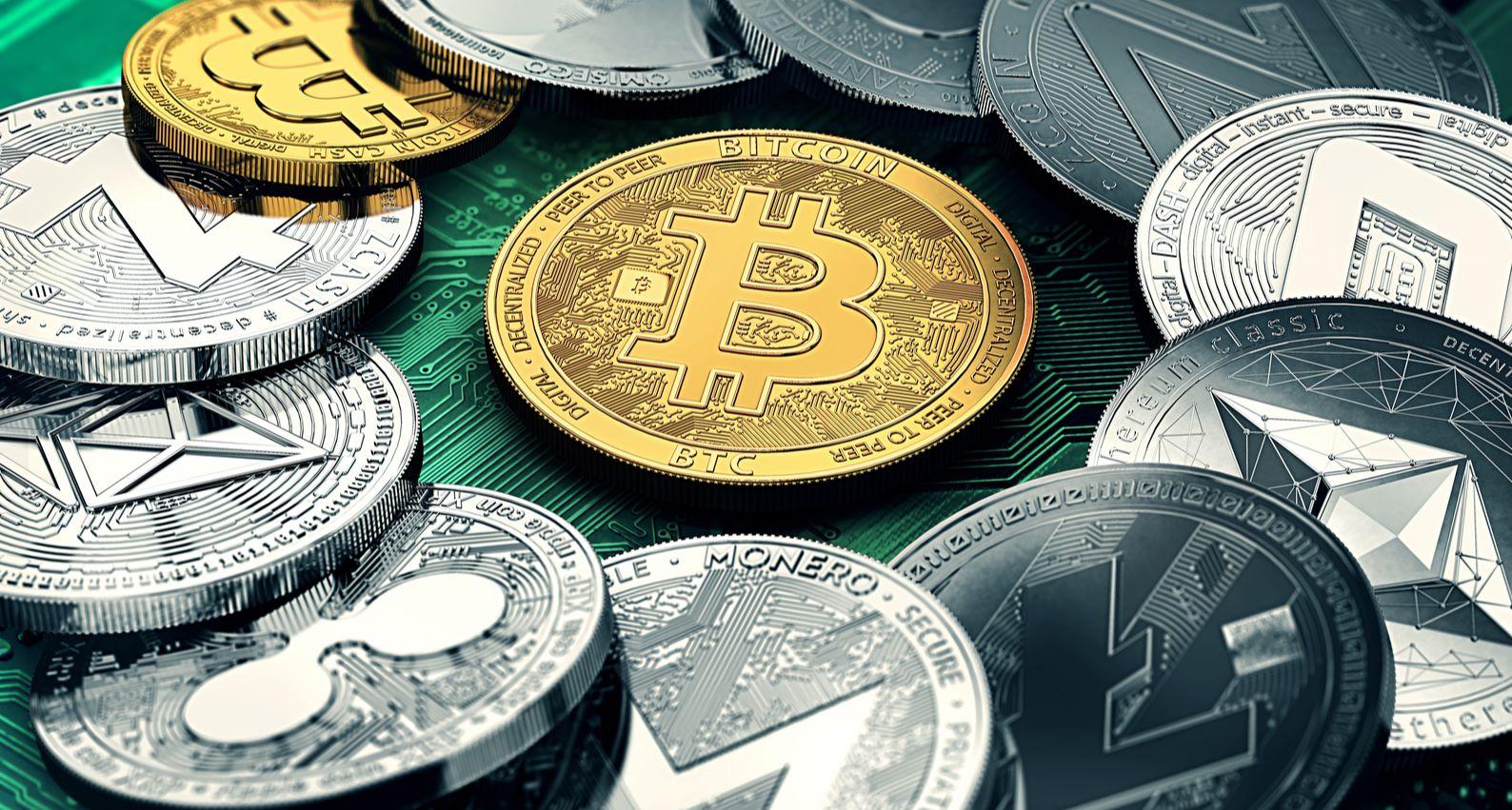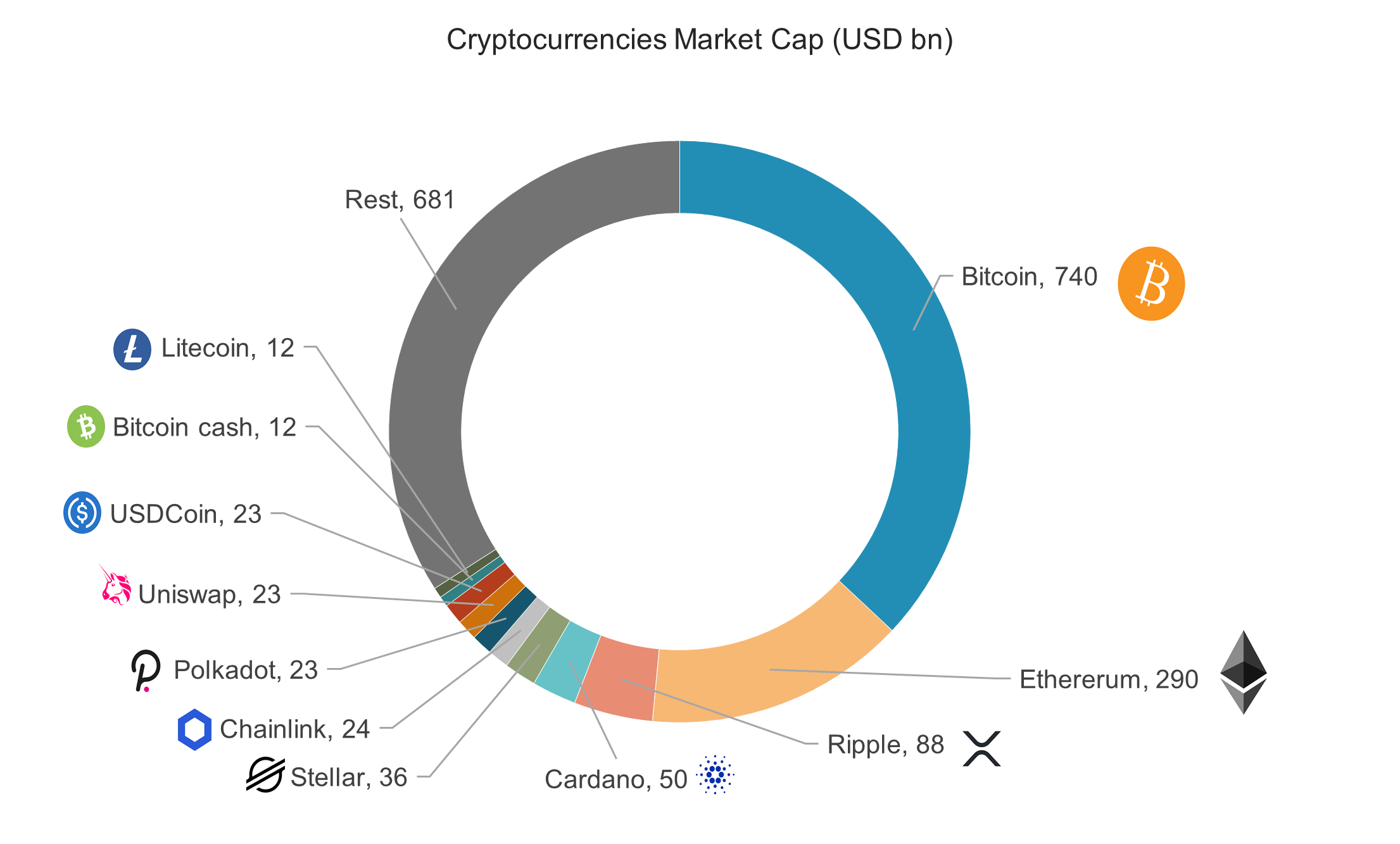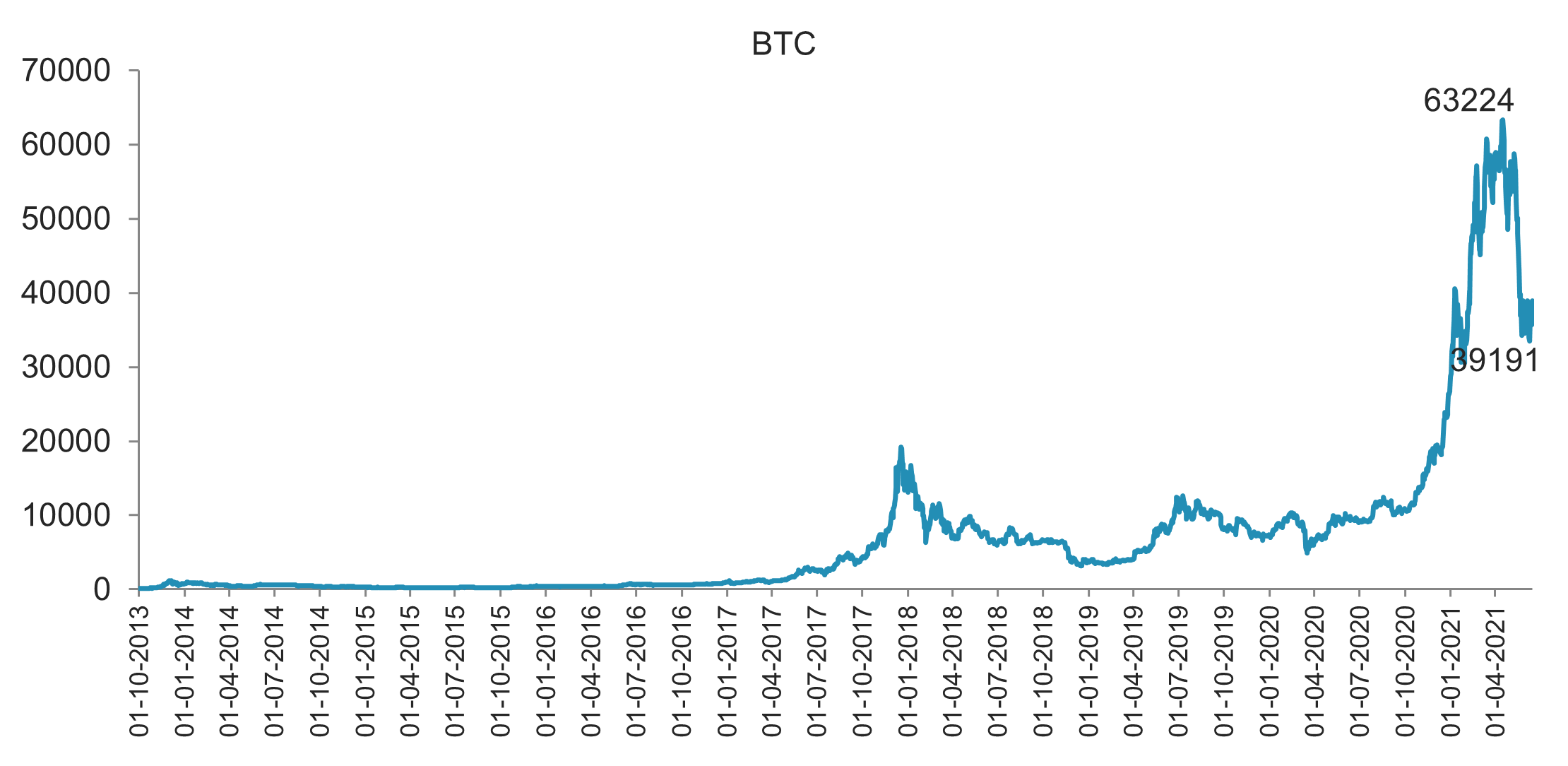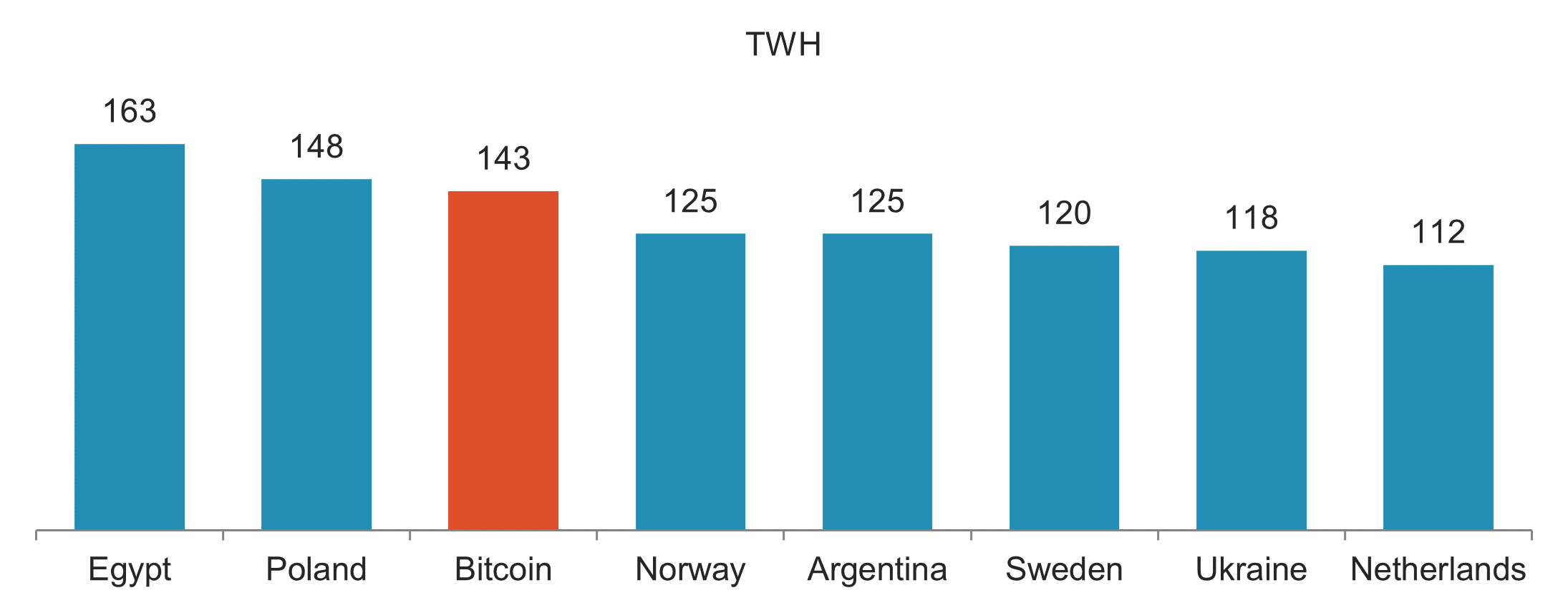Cryptocurrencies: An Inevitable Step Into The Future?
Published on 23 Jun, 2021

Cryptocurrencies, especially bitcoin, have been making news these days. Several factors have contributed to their emergence, from the surge in online platforms to their perception as a hedge against the dollar and their appeal to retail investors. As with any innovative change, these currencies are also fraught with challenges: their safety as an asset, the environmental hazard they pose, or the absence of government backing. However, what cannot be denied is that cryptos are changing the financial landscape. Building the right regulatory framework around them will only give these currencies more validity and make transactions more secure.
As digitalization strengthens its hold on almost every walk of life, why should currencies be an aberration? Enter cryptocurrencies, that first made noise in the 2000s, emerging as an alternative to avoid the conventional banking sector after the financial crisis of 2008-09. Since then, these currencies have picked up significantly. The boom lately is attributable to several factors. First, cryptocurrencies are unregulated or decentralized, and anyone can participate. Also, with companies (such as Tesla, VISA among a host of others) adopting them as modes of payment and cryptocurrencies coming under the purview of taxation directly or indirectly, they are increasingly becoming mainstream. Most recently, the President of El Salvador announced that the country would soon accept bitcoin as legal tender. Moreover, the pandemic has created conditions conducive to the rise of cryptocurrencies, with investors, especially retail investors, looking for alternative sources of investment or returns, amid the surge in online platforms and touchless payment systems. Furthermore, cryptocurrencies are attracting fintech innovators at a scorching pace, and especially the younger generation. People increasingly view these as an asset, a safety net against the US dollar.
EXHIBIT 1: MARKET CAPITALIZATION/VALUE OF CRYPTOCURRENCIES

Source: Coindesk, As of June 14, 2021
There are over 3000 cryptocurrencies in the market today, with total value exceeding USD2 trillion. Of these, bitcoin, which commands majority of the value share, has sparked the maximum interest, be it among investors, corporate sector, or regulators. A key reason for the rise of bitcoin, besides the host of factors mentioned above that are working conjointly, is that the currency enjoys the confidence of people. Amid limited supply (only 21 million units), demand has risen, sending its value shooting through the roof—as of June 14, 2021, the value of one bitcoin was about a whopping USD39,191, albeit substantially below the highest price (so far) of over USD63,000 reached in April 2021.
EXHIBIT 2: BITCOIN PRICE (USD) SINCE 2013

Source: Coindesk, Price USD 39191 as of June 14, 2021
While the growth in bitcoin’s value has been stupendous, it has also been highly volatile. Over a span of just two months, the value crashed from over USD63,000 as recently as April 2021 to about USD39,000 by the second week of June! Such massive gyrations in price have been a staple feature of bitcoin. Since the supply of bitcoin is limited to 21 million units due to its inbuilt mechanism, the price of a bitcoin is highly sensitive to the trading of the cryptocurrency. There are three main participants in the bitcoin market: miners (who mine new bitcoins by deploying massive computing capabilities), holders of bitcoin (especially those who had bought it early at lower values) and traders (seeking to benefit from buying and selling at higher prices). As such, the value of bitcoin is highly susceptible to negative news. The latest drop in bitcoin can be attributed to China announcing a crackdown on cryptocurrency mining and Elon Musk declaring that Tesla will not accept bitcoin payment for car sales. As an alternative to pure capital appreciation-based returns, several cryptocurrencies have made ‘yield farming’ possible, i.e., earning (potentially) steady ‘interest’ on the investment in cryptocurrencies. However, these are limited to the more sophisticated crypto investors, while most retail investors still chase absolute returns and can potentially lose their principal investment due to very high volatility. This abnormally high volatility has also driven a deep wedge in the world of finance.
Those in favor of the cryptocurrency (such as Cathy Wood of Ark Invest) argue about its utility and gradually increasing acceptance in mainstream finance. Retail investors are gravitating toward cryptocurrencies, lured by its skyrocketing valuation and the possibility of making once-in-a-lifetime gain in a very short time, which is rarely possible through mainstream assets such as fixed income or equity markets. Those who view it very skeptically are wary about its safety as an asset, non-environment-friendly aspect, and potential to be a bubble. Central bank regulators and governments view cryptocurrencies as a threat to their monopoly on issuance of fiat currency and control on money supply; plus, there is the need to trace ownership to prevent the use of the currency in illegal activities such as money laundering. For example, the recent restrictions imposed by China on cryptocurrency mining in the country are seen by many as a measure to buttress the position of its digital yuan.
Of late, investors have begun to pay closer attention to the security issues arising from the mechanism around which these currencies operate. The key tenet of distributed ledger – the information of the transaction does not get recorded on any central ledger and hence cannot be lost – notwithstanding, the flip side is that it is neither monitored by banks nor any regulators. While the distributed ledger mechanism is strong due to the blockchain technology, it must be understood that every information or data stored digitally is vulnerable to hacking. Cryptocurrencies stored in digital lockers can be and have been hacked and stolen. MIT estimates that USD2 billion worth of cryptocurrencies have been hacked since 2017. Cryptocurrency is, therefore, no more safe or unsafe than any other information on the digital network. Electronic devices or software, by their very nature, are exposed to threats.
The bigger grey area is the use of cryptocurrencies in illegal activities. This largely springs from the fact that cryptocurrency is not a part of mainstream banking channels or monitored/traced. Also, the ownership of these currencies is anonymous, which creates the fear of theft or loss. So, when Gerald Cotton, CEO of digital asset exchange Quadriga CX, died without sharing the password to access USD145 million worth of stored currencies, such as bitcoin and Litecoin, held on behalf of its customers, they were unable to access their digital wallets. What is at stake here, therefore, is the legality of the transaction, not the unit of transaction.
Yet another concern is that these currencies are not allowed by major central banks since independent cryptocurrencies pose a challenge to their issued currencies. The US Fed, for instance, views even stablecoins as having the potential to destabilize payment systems. The fears to an extent came true when TITAN crypto stablecoin crashed recently. This prompted billionaire investor Mark Cuban, who lost a sizable investment in the cryptocurrency, to call for stablecoins to be brought under the purview of regulatory governance. China, on the other hand, has launched the digital version of yuan and intends to promote it over independent cryptos. The ECB as well as other major central banks worldwide are still deliberating over cryptocurrencies.
The damage to the environment caused by cryptocurrency mining is another major issue, especially amid rising awareness about climate change globally. As cryptocurrency transactions entail intense data mining, electricity consumption is very high. It is believed that the electricity consumed in crypto mining surpasses the annual electricity consumption of many countries. While wastage of power is a concern, the counter argument is that it is not restricted to this mode of payment alone. The traditional banking infrastructure is also a massive consumer of electricity, but does this put banking under any kind of scrutiny? Also, renewable energy resources are estimated to be increasingly used to meet cryptocurrency’s energy requirements.
EXHIBIT 3: BITCOIN MINING CONSUMES MORE ENERGY THAN SEVERAL EMERGING AND EUROPEAN COUNTRIES

Source: Cambridge Centre for Alternative Finance; Enerdata; Country data as of 2019, Bitcoin data as of May 2021
Many other concerns stem from these main issues, such as cryptos not having value as these are not tangible, and, hence, speculative, or not being taxable in the absence of being monitored by any central authority, or volatile with values yo-yoing massively following any trigger – maybe a tweet by Elon Musk or China’s crackdown on crypto mining. Some of these can again be rebutted – profits from bitcon are taxable in certain nations, while countries across the world are beginning to experiment with their own digital cryptocurrencies.
Having said this, investors cannot throw caution to the winds. For one, that this is not real money, technically speaking, i.e., the currencies do not have the backing of a government or a central monetary authority. These digital modes of payment run on high-power computational technology, which like any technology will have limitations – access to networks, reliability of connections, and security too, irrespective of how robust the mechanism is. Then their stability as a mode of payment will always be questioned what with the values fluctuating widely. Furthermore, it will take time for their credibility as a mainstream investment instrument to be established. Last but not the least is the lure of legal tender – digital money may find it hard to rival this, given the security of government-backed currencies.
This brings investors and users then to a crossroad – what to make of cryptocurrencies. The answer may emerge only with time, depending on how they are governed by the market forces of demand and supply. Whether or not bitcoin, its peers or other advanced successive cryptocurrencies turn out to be a mere speculative bubble, what cannot be denied is that they are super advancements in technology set to reshape the financial landscape. What may be needed is better monitoring or enforcement measures involving the government/central banks to give cryptocurrencies validity and stronger protocols to ensure privacy and safety of transactions. Buttress this with intensive due diligence on investor’s part to understand the instrument. While yes, there is no foolproof formula against fraud, this can go a long way in keeping any investment safe, digital or fiat.

